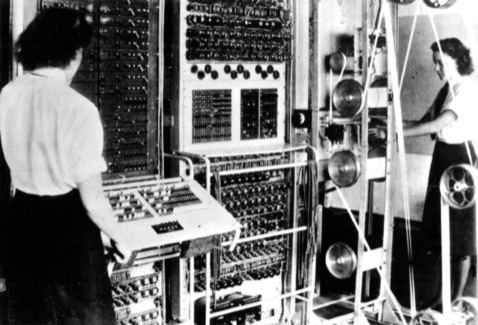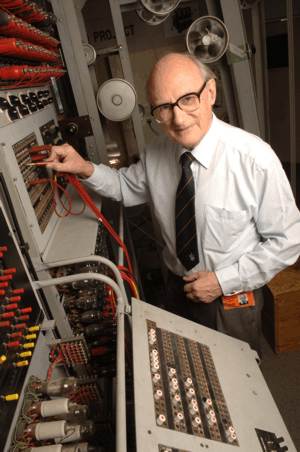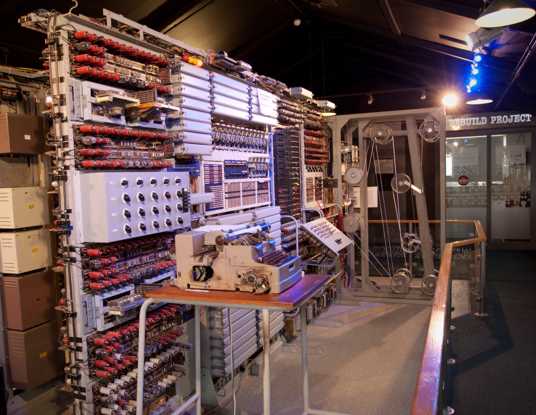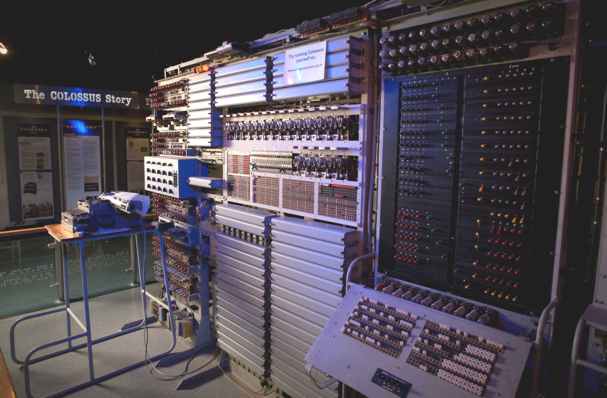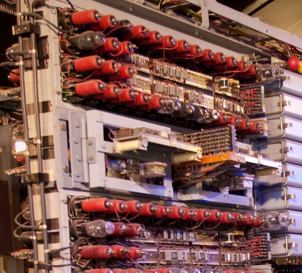| Colossus Re-enactment To Mark 70th Anniversary |
| Written by Sue Gee | |||
| Wednesday, 05 February 2014 | |||
|
On 5 February 1944 Colossus Mk I commenced the code-breaking operations that helped to shorten the course of World War II. This is being re-enacted today, 70 years later using the re-built Colossus at a celebration attended by some of the original operators and their families. Colossus was the first electronic computer, but news of its existence was kept top secret for 30 years because of the sophistication and sensitivity surrounding the encryption it had helped to break. Designed by British telephone engineer Tommy Flowers, Colossus was built to speed up code-breaking of messages encrypted using the highly sophisticated Lorenz cipher used in communications between Hitler and his generals during World War II. Having been built at the Post Office Research Station in Dollis Hill, the first prototype was delivered to Block H at Bletchely Park, now home to TNMOC, the UK'S National Museum of Computing, using valves that had originally been purposed for telephone exchanges.
Colossus occupied the size of a living room (7 ft high by 17 ft wide and 11 ft deep), weighed five tonnes, and used 8kW of power. It incorporated 2,500 valves, 501 of which were thyraton switches, about 100 logic gates and 10,000 resistors connected by 7 km of wiring. Reading 5000 characters per second, Colossus found the start wheel positions of Lorenz-encrypted messages to enable the decryption of 63 million characters. Typically, it took Colossus up to four hours to establish the start wheel positions of messages. It is often surmised that the Allies might have been reading some of the decrypted messages even before they reached German High Command. By the end of the war, 63 million characters of high-grade German messages had been decrypted by the 550 people working on the ten functioning Colossi at Bletchley Park. After the war, most of the Colossi were broken up and the plans destroyed in an attempt to keep the work secret and to conceal the fact Britain was still using two of the machines to read Soviet messages but Tony Sale, co-founder of The National Museum of Computing, decided to rebuild one after snippets of information had emerged about the machines in the 1970s and 1980s. The rebuild was based on eight photographs of Colossus taken in 1945 and a few circuit diagrams kept by engineers who worked on the original computer. Work started in 1994 and was done by Tony Sale and his team of dedicated volunteers.
Tony Sale (1931- 2011) and the rebuilt Colossus
The rebuilt fully-functioning Colossus Mark II was completed in 2007 and since 2012 has been housed in TNMOC's new extended Colossus Gallery allowing visitors to walk around the enormous machine for the first time. As a working exhibit In TNMOC's educational programme for schools and colleges, the Colossus Rebuild inspires young people to become the engineers and computer scientists of the future.
To mark the 70th anniversary of its first run, Colossus veterans and their families have been invited to a re-enactment of the code-breaking process from intercept to decrypt with the working rebuild of Colossus.
Tim Reynolds, Chair of The National Museum of Computing, said: "February 5 will be a proud day for the Museum to host the veterans who are able to make the journey. This day is in honour of all the men and women who worked on breaking the Lorenz cipher." "The working Colossus rebuilt by the late Tony Sale and his team provides a mesmerising start to our story of the history of computing at The National Museum of Computing. It fascinates people of all ages and we see on a daily basis the inspiration that it provides to school groups who visit the Museum."
More InformationThe National Museum of Computing Related ArticlesUK National Computer Museum Off-Limits At Bletchley Park The Four Generations of Computers Award Established for Computer Conservation
Comments
or email your comment to: comments@i-programmer.info
To be informed about new articles on I Programmer, install the I Programmer Toolbar, subscribe to the RSS feed, follow us on, Twitter, Facebook, Google+ or Linkedin, or sign up for our weekly newsletter.
|
|||
| Last Updated ( Wednesday, 25 February 2015 ) |
